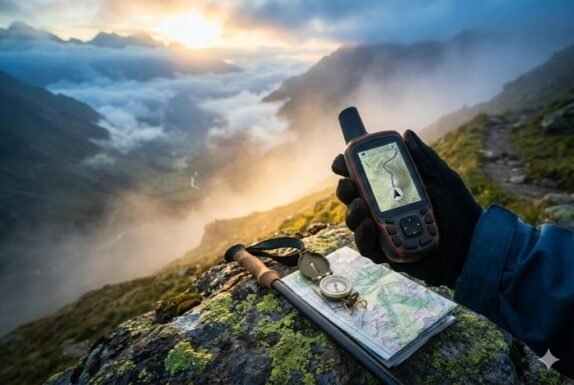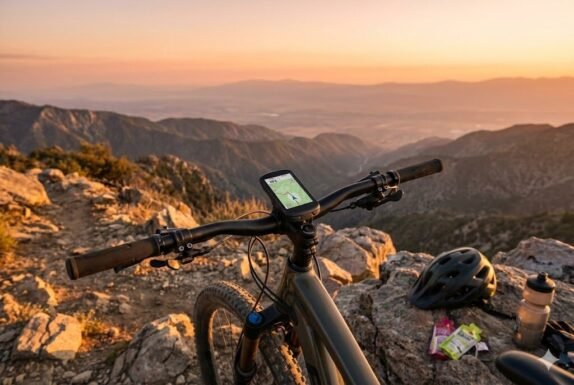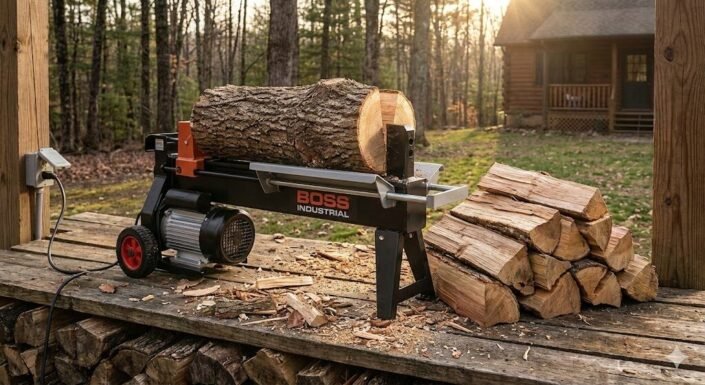5 Best Hiking GPS Devices – Navigate Every Trail with Confidence in 2025
Navigate every trail with confidence using the best hiking GPS devices of 2025, built for pinpoint accuracy, rugged durability, and seamless outdoor navigation. These devices combine advanced satellite technology, long battery life, and intuitive interfaces, making them essential for hikers, climbers, and backcountry adventurers.
Our expertly curated list highlights the top hiking GPS devices, evaluated for performance, reliability, and ease of use. From the feature-packed Garmin GPSMAP 67 to the minimalist Bushnell BackTrack Mini, these tools cater to every adventurer’s needs. Explore our guide to find the perfect GPS for your next trek.
Table of Contents
At a Glance: Best Hiking GPS Devices
| Product Name | Key Features | Ideal Use |
|---|---|---|
| Garmin GPSMAP 67 | Multi-band GNSS, TopoActive maps, 180-hour battery | Serious hiking, long treks |
| Garmin eTrex 32x | 3-axis compass, TopoActive maps, compact design | Day hikes, budget adventurers |
| Garmin inReach Mini 2 | Satellite communicator, SOS, 14-day tracking | Remote trails, safety-focused |
| Garmin Montana 750i | 5-inch touchscreen, inReach, 8MP camera | Multi-day expeditions, versatility |
| Bushnell BackTrack Mini | Waypoint tracking, 35-hour battery, simple UI | Casual hikes, beginners |
Best Hiking GPS Devices 2025
🥇 1. Garmin GPSMAP 67
Use Case / Strength: The Garmin GPSMAP 67 is the ultimate hiking GPS, ideal for serious adventurers needing unmatched accuracy and long battery life for extended treks.
- Multi-Band GNSS: GPS, GLONASS, Galileo, BeiDou for pinpoint accuracy in challenging terrain.
- TopoActive Maps: Preloaded with detailed trails, summits, and rivers on a 3-inch color display.
- Long Battery Life: Up to 180 hours standard, 840 hours in expedition mode.
- Rugged Design: IPX7 waterproof, built for harsh outdoor conditions.
- Sync Capabilities: Pairs with Garmin devices and supports extra map downloads.
| Pros | Cons |
|---|---|
| Superior accuracy | Premium price |
| Long battery life | Slightly bulky |
| Detailed maps | |
| Rugged build | |
| Versatile syncing |
🥈 2. Garmin eTrex 32x
Use Case / Strength: The Garmin eTrex 32x is a compact, budget-friendly GPS, perfect for day hikers and beginners seeking reliable navigation without complexity.
- Compact Design: Lightweight at 0.5 pounds, easy to carry in any pack.
- TopoActive Maps: Preloaded trails and topo details on a 2.2-inch sunlight-readable display.
- Navigation Tools: 3-axis compass and barometric altimeter for precise bearings.
- Battery Life: Up to 25 hours on two AA batteries, ideal for weekend trips.
- Waterproof Build: IPX7 rating withstands rain and splashes.
| Pros | Cons |
|---|---|
| Affordable price | Smaller display |
| Lightweight design | Limited battery life |
| Reliable navigation | No satellite messaging |
| Waterproof build | |
| Easy to use |
🥉 3. Garmin inReach Mini 2
Use Case / Strength: The Garmin inReach Mini 2 is a lightweight satellite communicator, ideal for safety-focused hikers exploring remote trails without cell service.
- Satellite Communication: Send texts, share locations, or trigger SOS via satellite.
- Ultra-Lightweight: 3.5 ounces, clips easily to your pack.
- Long Battery Life: Up to 14 days in tracking mode for extended trips.
- App Integration: Pairs with Garmin app for weather and map updates.
- Digital Compass: Accurate orientation even when stationary.
| Pros | Cons |
|---|---|
| Satellite SOS feature | Subscription required |
| Ultra-lightweight | Limited GPS features |
| Long battery life | Small display |
| Reliable communication | |
| Versatile app syncing |
🏅 4. Garmin Montana 750i
Use Case / Strength: The Garmin Montana 750i is a versatile powerhouse, perfect for expedition leaders needing advanced navigation, communication, and photography features.
- Large Touchscreen: 5-inch glove-friendly display with TopoActive and City Navigator maps.
- inReach Communicator: Satellite texting, location sharing, and SOS capabilities.
- 8MP Camera: Geotags photos for documenting your adventures.
- Long Battery Life: Up to 200 hours for multi-day trips.
- Rugged Build: MIL-STD-810 rated for rain, dust, and drops.
| Pros | Cons |
|---|---|
| Large, versatile display | High price |
| Satellite communication | Heavier at 14.5 ounces |
| Built-in camera | Subscription for inReach |
| Rugged construction | |
| Long battery life |
🏅 5. Bushnell BackTrack Mini
Use Case / Strength: The Bushnell BackTrack Mini is a simple, budget-friendly GPS, ideal for casual hikers who want easy waypoint navigation without complex features.
- Simple Navigation: Tracks paths and stores up to 10,000 waypoints for easy return.
- Lightweight Design: 3 ounces, perfect for pocket or pack carry.
- Battery Life: Up to 35 hours for long day hikes.
- Waterproof Build: IPX7 rating handles rain and splashes.
- Glove-Friendly Buttons: Easy to use in cold or wet conditions.
| Pros | Cons |
|---|---|
| Affordable and simple | No maps or compass |
| Lightweight design | Basic functionality |
| Long battery life | No satellite features |
| Waterproof build | |
| Easy to use |
Final Verdict: Which Hiking GPS Device is Your Best Trail Companion?
| Product | Best For |
|---|---|
| Garmin GPSMAP 67 | Serious hikers, long treks |
| Garmin eTrex 32x | Day hikes, budget adventurers |
| Garmin inReach Mini 2 | Remote trails, safety-first |
| Garmin Montana 750i | Multi-day expeditions, versatility |
| Bushnell BackTrack Mini | Casual hikes, simplicity |
Note: Select based on your hiking style—advanced for remote treks, simple for casual outings. Regularly update maps and firmware for optimal performance. For satellite communicators, check subscription costs and coverage. Always carry a physical map and compass as backups, and test your device before heading out. Check linked retailers for the latest deals and ensure compatibility with your adventure gear.
Last update on 2025-12-27/Affiliate links / Images from Amazon Product Advertising API












